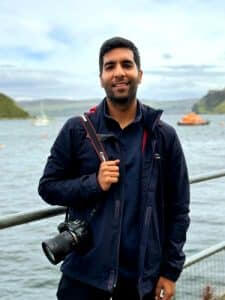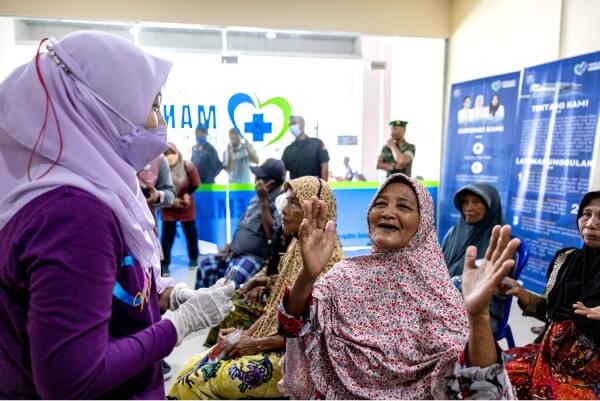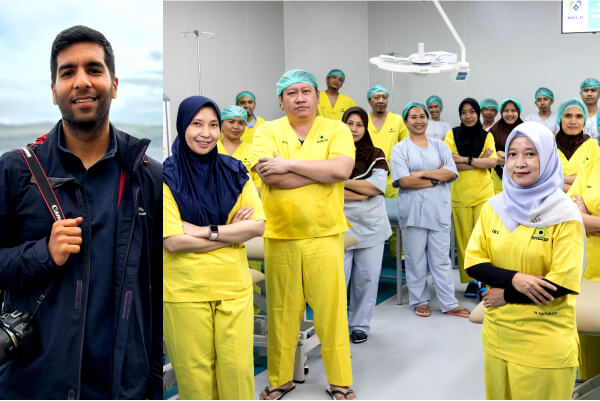Every minute, one person in Indonesia goes blind – a staggering reality unveiled in the opening of Nalin Narang’s new film, which recently earned recognition from the World Health Organisation (WHO). A few minutes in, Sydney-based Nalin Narang’s film goes on to explain that the prevalence of blindness in this archipelagic country is primarily due to a lack of awareness about eye health.
A significant cause of blindness in the country is cataracts, which many people are reluctant to treat surgically, despite the condition being curable. To add to their woes, there is a shortage of ophthalmologists. But there is an army of women doctors, working behind the curtain to restore vision.
Nalin Narang’s film, titled The Visionary Women of Indonesia, highlights these unsung heroes. This compelling narrative recently won the Grand Prix award at the 5th Health for All Film Festival under the disabilities, blindness and rehabilitation category – chosen from nearly 1,000 entries worldwide.
“Winning the Grand Prix was a surprise,” Narang tells Indian Link. “As a team, we were hoping that a film festival selection would help us promote our cause, and being a category winner, would hopefully take that to the next level.”
Narang, who made the film for Sydney-based The Fred Hollows Foundation, says that the monetary prize will help boost the organisation’s efforts in ending avoidable blindness through their initiatives which invest in health systems.
“On a personal note, the win gives me a lot of confidence that we’re doing good work,” he smiles.
Storytelling as a powerful tool

Nalin Narang was born in a Sindhi family. While he’s never lived in India, his father hails from Jaipur and mum from Pune. Narang was born in Japan, when his father’s work prospects took the family there.
He migrated to Australia to study Software Engineering at the UNSW. But after completing his degree and working in IT for a bit, he decided to change paths and attend film school. There’ s been no looking back.
“My first foray into the dramatic arts and storytelling as a young adult happened through community theatre. I began as an actor/dancer and then transitioned into writing/directing for stage. Upon completing film school, I was eager to get onto sets, whether that was as an extra, an actor, a sound recordist, a production assistant or other,” he shares.
Prior to joining The Fred Hollows Foundation, he worked on the crew of several TV and film productions such as Thor: Love and Thunder (Marvel Cinematic Universe), The Amazing Race Australia (Channel 10), The Mole (Netflix) and many others.
Storytelling through film is a wonderful dream-like place for Narang. And that shows in his latest, The Visionary Women of Indonesia.
While filming for this project took place in 2022 before Narang joined the team, his involvement was in a post-production capacity. This involved conceptual development, writing and editing, and took about a month to complete.

“Having worked with The Fred Hollows Foundation for some time, I’ve been able to develop an understanding of how to convey uplifting eye-care stories. The great benefit of this is in knowing what the key stages in a patient’s journey are, and how to guide a viewer through that. This film was a fantastic opportunity to show eye care from the perspective of health workers,” he tells of his experience.
Healthcare Professionals: The Heroes behind the curtain
The awards ceremony for WHO’s Health for All Film Festival was held on the eve of the World Health Assembly in Geneva where health ministries and authorities converged to make policy and investment decisions concerning world health.
“WHO has called for greater investment in public health, and I believe our film proves why this is important and how effective it can be,” Narang shares.
While the film does touch on issues like the vision crisis in Indonesia, Narang believes, it is more focused on showcasing the great work being done in the region to counter this.
“Not only does the film promote the need for eye care, it also advocates for greater female participation in the health workforce,” he adds.
Ask him to describe his storytelling approach in this film, Narang explains: “When I set out to craft this story, the question I asked myself was, ‘How can someone who knows nothing about this topic, understand it and care for it?’ Integrity in telling real stories has always been important to me, which meant backing up the visuals with facts.”

“Moreover, I believed that a viewer would be far more impacted if they watched/heard from actual health workers in Indonesia, rather than a reenactment or dramatic re-telling,” he continues. “This meant doing some extra work to seek assistance from our team in Indonesia in procuring high quality transcripts and translations of interviews in English.”
While a picture may tell a thousand words, a five-minute film cannot encapsulate the years of collective experience by people like Dr Siti Farida (former chairperson of Perdami NTB), Dr Sriana Wulansari (former director of NTB Provincial Eye Hospital), and others.
“Undoubtedly, there is a lot more to their stories than this film covers,” says Narang.
Narang’s short yet captivating film concludes with a poignant scene of an Indonesian woman regaining her sight after a long time. As her eyes open to the world once more, she gazes at her doctor, tears streaming down her face, and utters a heartfelt “Ameen”.






